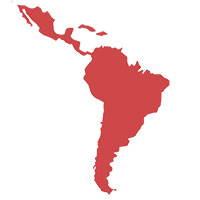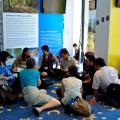Down to Business: Day 2 at COP16
admin | December 1, 2010.
Day 2 was exactly what people were expecting from Cancun. It was down to business for everyone, with pragmatic discussion on many of the small yet unresolved issues expected from the Cancun package.
The Acting Working Groups made slow progress, although they did hint at more significant action later in the conference. The LULUCF negotiators were hard at work whittling down the remaining questions in informal negotiations, however roadblocks may be ahead. Tuvalu strongly opposed the projected reference level model for forest management. A proposed solution to this impasse is anticipated on Wednesday morning.
This stands as an important point for developed countries, and will have a significant impact on any future mitigation actions taken by the international community. (Update: On Wednesday morning ECO reported that, “the emission reduction efforts of some countries could be reduced by up to 66% as a consequence of unaccounted emissions from logging their forests”).
Tiny steps were also made in the LCA and KP. Promises were made that some text on mitigation and MRV would be presented by the Chair in the near future. Thanks to the efforts of Mexico and other go-betweens to bridge the differences of opinion, there should be some discussion on Wednesday morning on the proposals for a new legally binding instrument, as well as amendments to the Kyoto Protocol in the major plenaries. If progress is made toward deciding on the legal form this could be a major, and necessary, step forward, and an achievement for Cancun. It will certainly raise hope about outcomes at next year’s COP17 in Durban if progress is made.
Last year, it was this that ultimately led to the collapsed Copenhagen Accord. Due to looming to time constraints, the consideration of legal form was relegated to informal consultations, ending in the secret negotiations that produced the Accord, which in turn was barely ‘noted’ by the UN.
Japan caused a minor stir on Monday through their repudiation of their participation in a second commitment period under Kyoto. In line with the quiet mood at Concun, however, there has not been much of a backlash against Japan. They did win Fossil of the Day, and NGO’s including the Climate Youth Japan, are starting to grow louder in Cancun, and one gets the sense some big actions are coming from observers.
The Subsidiary Board meetings got underway with immediate, if very slight, progress. The SBI, the body assigned to make recommendations to COP on policy and implementation, focused on financial mechanisms, with discussions about the Special Climate Change Fund and the Least Developed Countries Fund. In the afternoon Executive Secretary Christiana Figueres expressed her concern about the voluntary nature of contributions.
After a number of cancellations and rearrangements of civil society interventions, in the late afternoon these valuable contributions were given some time. In addition, the Chair of the SBI, Australian Robert Owen-Jones, established a contact group on civil society participation that will draft decisions to be presented to the SBI closing plenary on Saturday. This is a positive move forward for observer organizations at COP16, and can only assist the environmental movement.
The SBSTA got to work a contentious item that proved a headache in June, when AOSIS proposed a technical paper on limiting warming to 1.5 degrees. In June, it’s progress had been blocked by Saudi Arabia’s opposition to it. Again progress stalled, and the without much fuss the SBSTA noted the item before agreeing to revisit it next June.
Overall, a day of nitty-gritty and nuts and bolts. Very small progress was made, but these small steps do look promising and each one has the potential to lead to more significant actions.
Photo via the UNFCCC.













comment